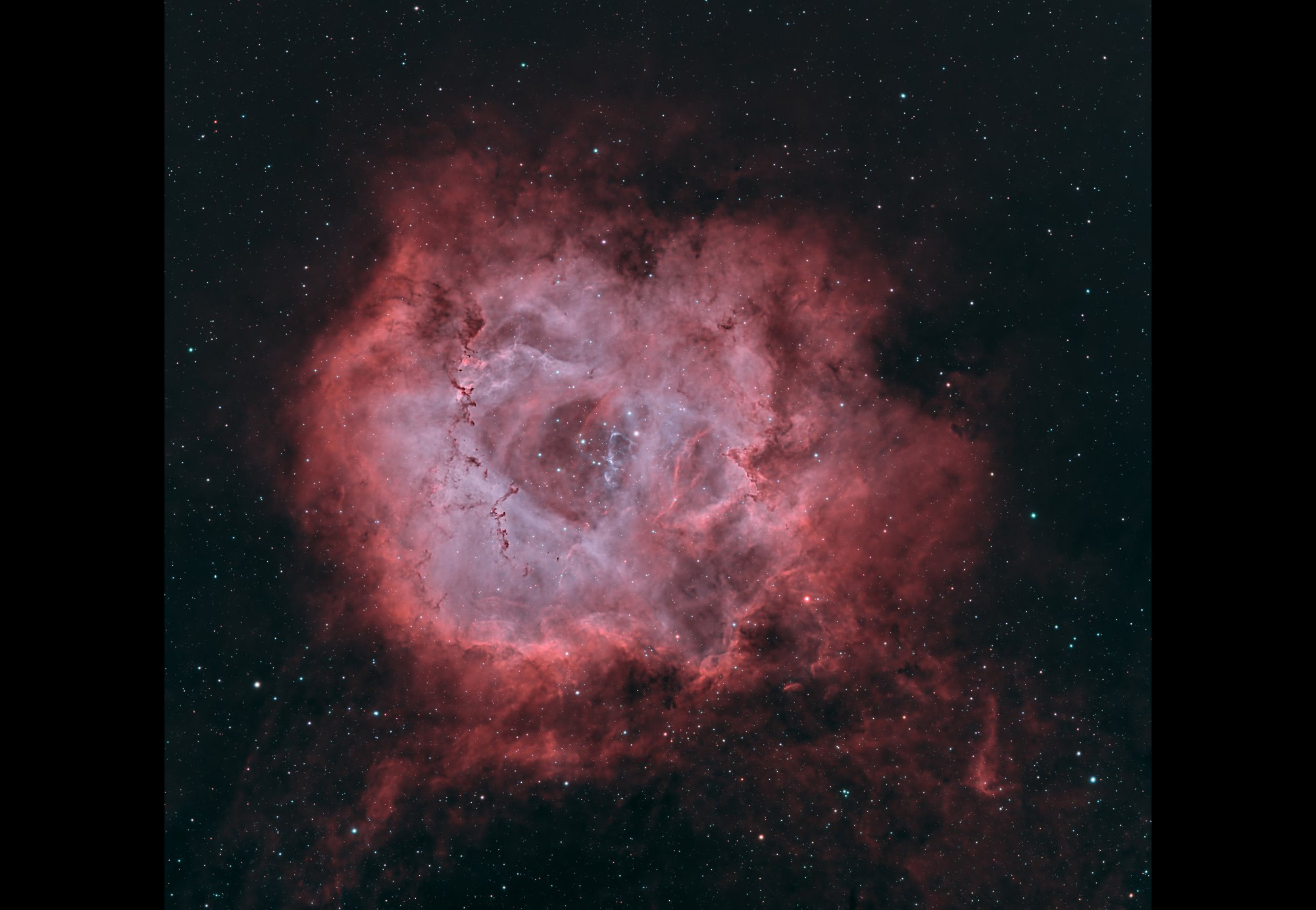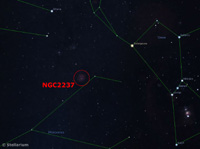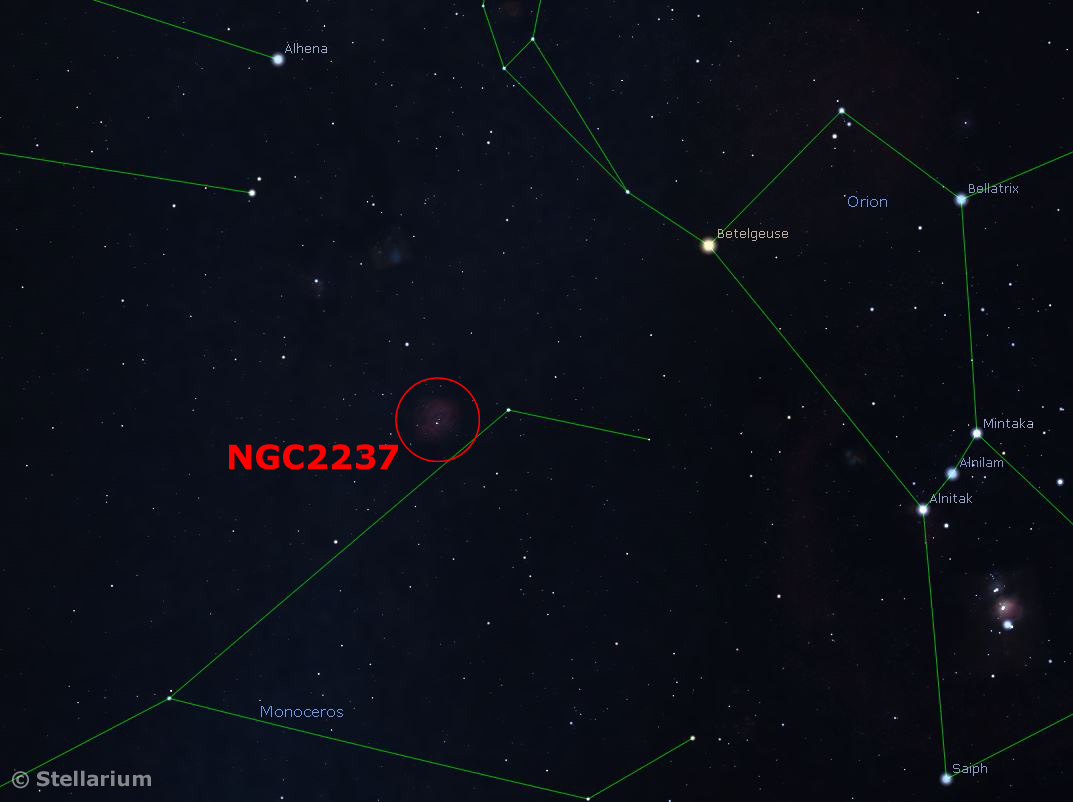Information...
The Rosette Nebula is a HII emission nebula in the constellation of Monoceros.
The nebula is about 5,000 light years from Earth and measures roughly 230 light-years in diameter. It's estimated to have a mass of about 10,000 × that of our Sun.
The region responsible for illuminating the gas contains approx 2,500 stars with two massive O-type stars being primarily responsible for the ionised bubble.
The NGC2237 catalogue number is sometimes used to refer to the whole nebula, but also a smaller area, alongside NGC2238, NGC2239 and NGC2246. In addition NGC2244 refers to the open cluster within the nebula.
For more info. see the Wikipedia entry.
James Clark's full resolution 2023 image & more info can be found on his astrobin page.







